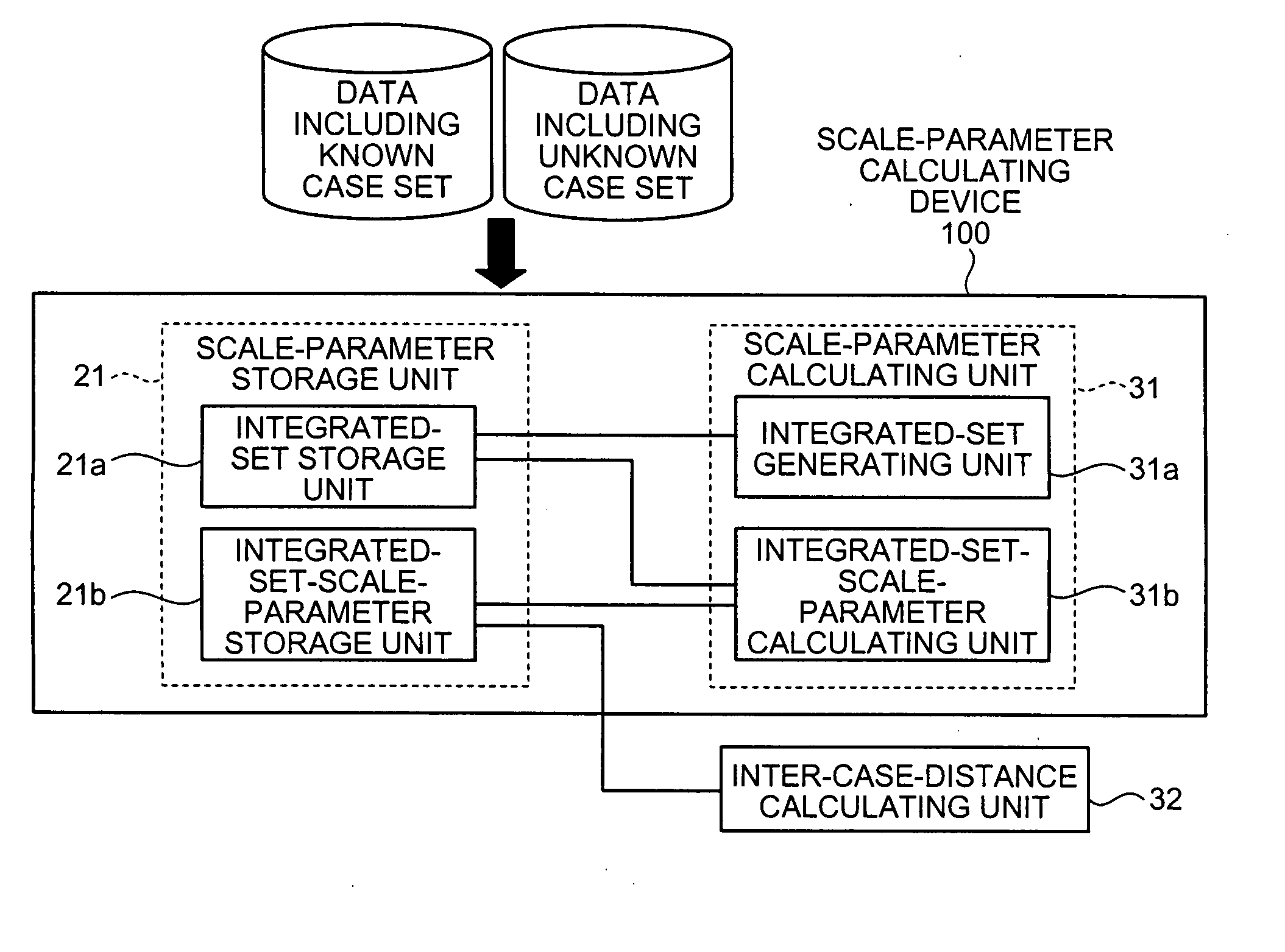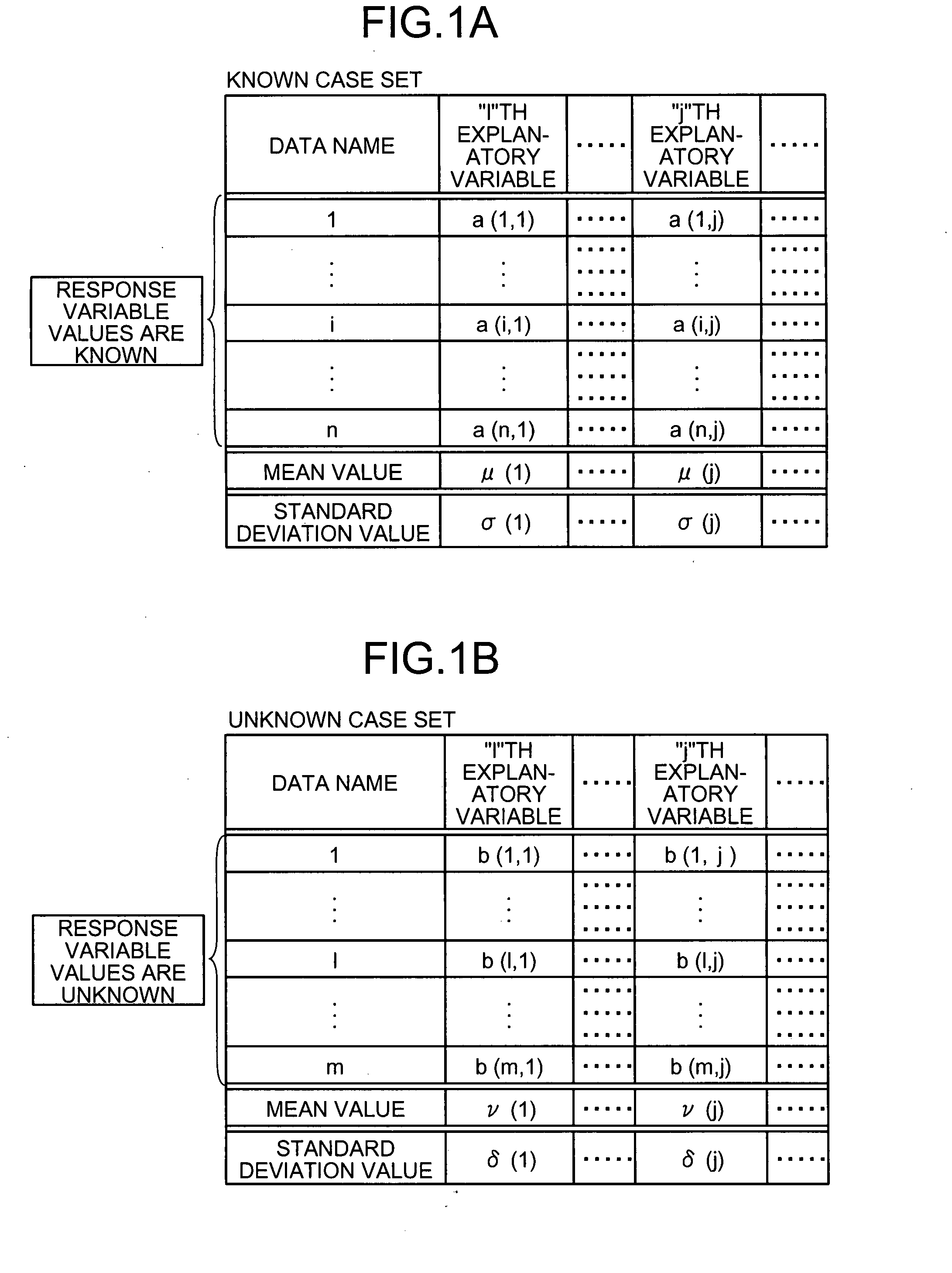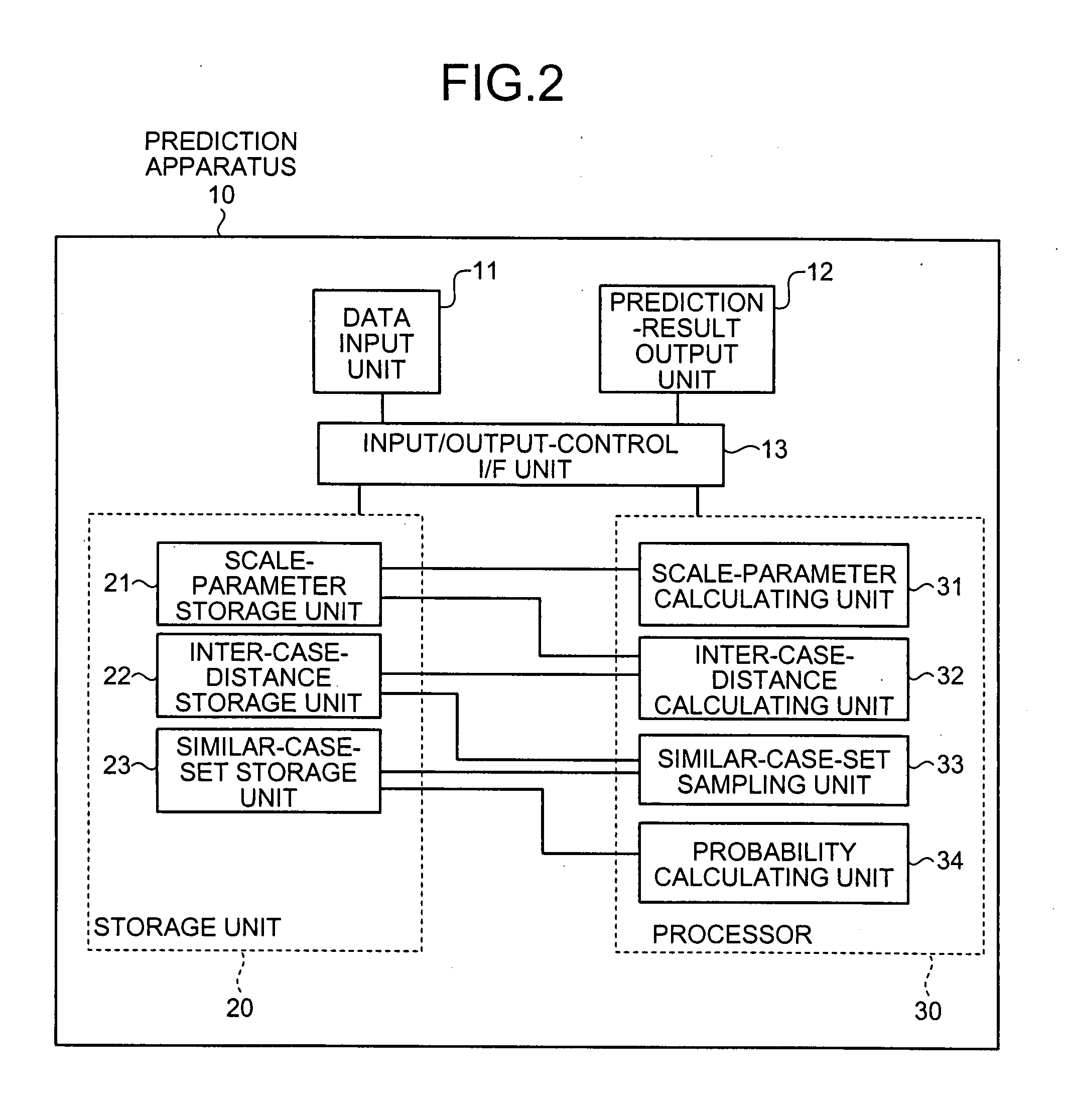Computer-readable recording medium, apparatus and method for calculating scale-parameter
a computer-readable recording medium and scale-parameter technology, applied in the field of computer-readable recording mediums, an apparatus and a method for calculating scale-parameters, can solve the problems of deteriorating prediction accuracy, difficult to obtain an accurate prediction, and difficult to perform sufficient scaling of the explanatory variable values of unknown cases
- Summary
- Abstract
- Description
- Claims
- Application Information
AI Technical Summary
Benefits of technology
Problems solved by technology
Method used
Image
Examples
first embodiment
[0038]In the following description, as shown in FIG. 1A, a “j”th explanatory variable value of an “i”th known case of a known case set composed of “n” known cases is expressed as “a(i,j)”, and, as shown in FIG. 1B, a “j”th explanatory variable value of an “l”th unknown case of an unknown case set including “m” unknown cases is expressed as “b(l,j)”. A mean value of explanatory variable values of the “j”th explanatory variable of the known case set is expressed as “μ(j)”, and a standard deviation value of the same is expressed as “σ(j)” (see FIG. 1A). A mean value of explanatory variable values of the “j”th explanatory variable of the unknown case set is expressed as “ν(j)”, and a standard deviation value of the same is expressed as “δ(j)” (see FIG. 1B). FIGS. 1A and 1B are schematic diagrams for explaining symbols used in the
[0039]Meanwhile, {x(i)|i=1 . . . n} represents a set of “n” values of x(1) to x(n); {x(i,j)|i=1 . . . n, j=1 . . . m} represents a set of (“n×m”) values of x(1,...
second embodiment
[0077]More specifically, the scale-parameter calculating apparatus calculates, according to the equation shown in FIG. 8B or FIG. 8C, the scale parameter s(1) of “age (j=1)” as 8.3, and the scale parameter s(2) of “annual income (j=2)”, as 143.
[0078]Using the scale parameters, as in the case of the first embodiment, the similar case set (cases #9, #8, and #6) are retrieved as the top “k=3” known cases from the known cases arranged in order of increasing inter-case distance based on the inter-case distances between the known case set and the unknown case set taken for all the combinations thereof as shown in FIG. 8D. The probability “p (purchased)” is calculated as 100% because all of the three cases have “purchased” as the objective variable. The equations shown in FIGS. 3A and 3B, into which specific numerical values are substituted, and calculation results thereof are shown in an “inter-case distance” column of FIG. 8D.
[0079]In the example shown in FIG. 14C, in which the standard...
third embodiment
[0097]The scale-parameter calculating apparatus calculates the scale parameter of each explanatory variable such that the mean square of inter-explanatory-variable distances taken for all the combinations of known cases of a known case set and unknown cases of an unknown case set assumes a constant value for every explanatory variable. For example, when a scale parameter of each explanatory variable is calculated using an equation shown in FIG. 11A, the mean square of inter-explanatory-variable distances taken between the unknown cases and the known cases for all the combinations thereof assumes a single value “1” for every explanatory variable. More specifically, the scale parameter s(j) of the “j”th explanatory variable is calculated using the “differences: a(i,j)−b(l,j)” taken for all the combinations (=“n×m”) of a(1,j) to a(n,j) and b(1,j) to b(m,j) using the equation shown in FIG. 11A.
[0098]As in the case of the first embodiment, when the union set (see FIG. 8A) of the known c...
PUM
 Login to View More
Login to View More Abstract
Description
Claims
Application Information
 Login to View More
Login to View More - R&D
- Intellectual Property
- Life Sciences
- Materials
- Tech Scout
- Unparalleled Data Quality
- Higher Quality Content
- 60% Fewer Hallucinations
Browse by: Latest US Patents, China's latest patents, Technical Efficacy Thesaurus, Application Domain, Technology Topic, Popular Technical Reports.
© 2025 PatSnap. All rights reserved.Legal|Privacy policy|Modern Slavery Act Transparency Statement|Sitemap|About US| Contact US: help@patsnap.com



